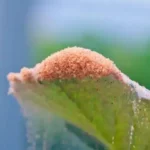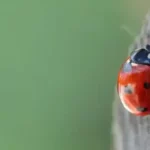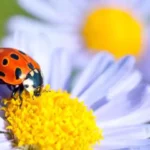Dealing with fruit flies infesting your plants can be incredibly frustrating. If you’ve ever found yourself swatting at these pesky insects while trying to tend to your indoor garden, then you’ve probably also asked how to get rid of fruit flies in plants. The good news is that you’re not alone. These tiny annoyances can quickly multiply and spread disease, making it challenging to enjoy your plants.
Fruit flies can be a nuisance in indoor plants. Here are some methods to help get rid of them:
- Remove Overripe Fruit: Fruit flies are attracted to ripening or rotting fruits and vegetables. Remove any overripe fruit or vegetables from your home.
- Clean Up Spills: Fruit flies are also attracted to spilled liquids, especially sugary ones. Clean up spills promptly and keep kitchen counters and other surfaces clean and dry.
- Use Apple Cider Vinegar Traps: Fill a small bowl or jar with apple cider vinegar and a few drops of dish soap. Cover the container with plastic wrap and poke small holes in it. Fruit flies will be attracted to the vinegar, but the soap will trap them.
- Create a Wine Trap: Similar to the vinegar trap, you can use wine as bait. Place a small amount of wine in a jar and cover it with plastic wrap with holes poked in it.
- Try a Banana Trap: Place a piece of ripe banana in a jar and cover it with plastic wrap with holes poked in it. The sweet scent will attract fruit flies.
- Use a Commercial Trap: You can also purchase commercial fruit fly traps, which use attractants to lure and trap the flies.
- Keep Soil Dry: Fruit flies also breed in moist soil. Allow the soil in your plants to dry out between waterings to help prevent fruit fly infestations.
- Consider Natural Predators: Some natural predators, such as predatory mites or parasitic wasps, can help control fruit fly populations. These can be purchased online or from garden centers.

In this guide, we’ll provide practical tips and strategies for effectively getting rid of fruit flies in your plants. This will allow you to reclaim your space and ensure your plants thrive.
As you continue reading, you’ll discover simple yet effective methods to reduce the fruit fly population in your plants. From natural remedies to preventative measures, we’ll cover everything you need to know to keep your plants fruit fly-free. Keep reading to learn how to take back control of the situation and say goodbye to those annoying buzzing insects and hello to a healthier, happier indoor garden.
Humble Highlights
- Discover these 3 tell-tale signs of fruit fly infestion and how they can wreak havoc among your indoor plants – AND what you can do to fight back so you can reduce the spread of disease and diminish their destructive tendencies.
- Save money by uncovering this one simple and cost-effective method you can use to reclaim the health of your plants so you can improve their health and your enviornmental space.
- Stop worrying if fruit flies will return to your newly vanquished garden with these insider tips on how to manage and control these tiny pests so you can retain your plants’ aesthetic appeal and their vigorous health.
Identifying Fruit Flies In Plants
When identifying fruit flies in plants, look for small flies with tan bodies, red eyes, and a distinct black T-shaped mark on their abdomen. Fruit flies are often drawn to overripe fruits, vegetables, and fermenting liquids.
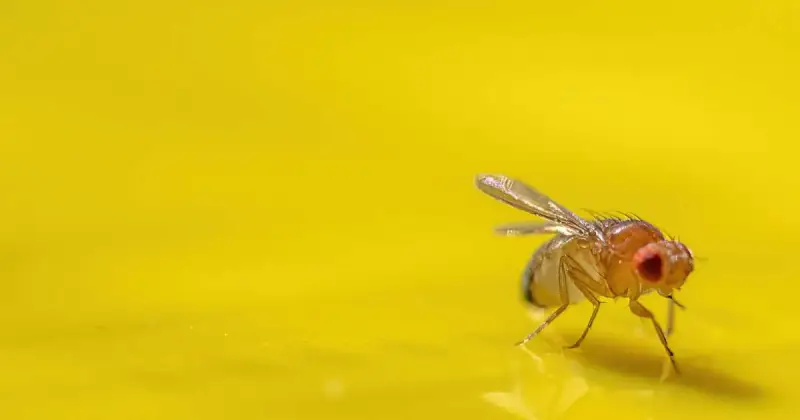
These insects can harm plants by feeding on decaying organic matter in the soil, affecting the roots. Understanding the fruit fly lifecycle is crucial for effective management. Female fruit flies can lay up to 500 eggs near moist soil surfaces, worsening infestations in indoor plants with nearby organic debris or overripe fruits. 1
Fruit flies can lay eggs in plant soil, which is moist and decaying, providing an ideal breeding ground for them. Their eggs hatch into larvae that feed on fungi, algae, and decaying plant matter in the soil.
Properly managing soil moisture levels is crucial to prevent fruit flies from multiplying in your plants while ensuring adequate drainage and avoiding overwatering may help control these pesky pests.
Although fruit flies can annoy, fighting back isn’t difficult. It’s all about using a few household items and staying vigilant to take back your indoor plants. Check out the video below from a local news affiliate in Minnesota that explains how anyone can combat fruit flies easily and effectively.
Signs Of Fruit Fly Infestation
Watch for small, flying insects near the plant to spot fruit fly infestation in plants. Here are several key signs to note:
- Flying Insects: Fruit flies are tiny insects that hover around plants, especially those with ripe fruits or decaying matter. Consistently watch for these pests to avoid their swelling numbers and potentially spreading disease among your plants.
- Larvae Presence: Look for white larvae, the immature form of fruit flies, in the soil or on the plant. Check for them near affected areas. 2
- Attraction To Organic Matter: Fruit flies are attracted to decaying organic material. Keep an eye on overripe fruits or compost bins, as they can be breeding grounds for fruit flies.
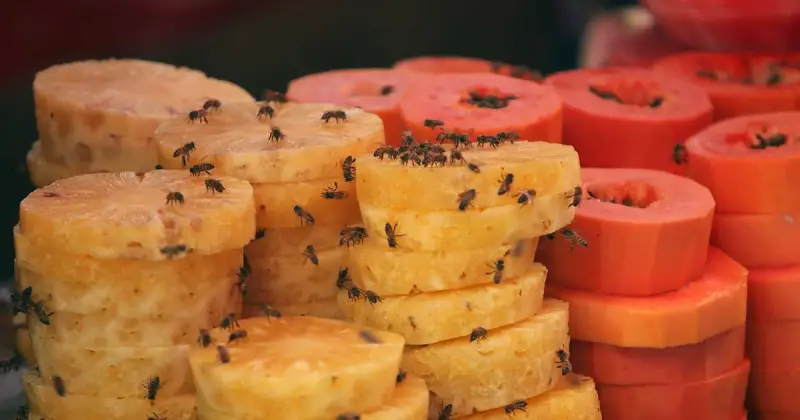
Natural Remedies For Fruit Fly Control
Natural remedies can effectively manage fruit fly infestations by targeting the pests at various life stages. Fruit flies are drawn to ripe fruits and fermenting foods, leading to common infestations.
Apple cider vinegar traps have proven highly effective in attracting and trapping fruit flies away from plants. Apple cider vinegar, or ACV, is highly attractive to fruit flies due to its fermented scent, miming the smell of ripe or rotting fruits. When used in a trap, the vinegar lures the fruit flies in, but they become trapped when dish soap is added. 3
Pour a small amount of apple cider vinegar into a bowl or jar along with a splash of water. The vinegar should be enough to attract the fruit flies but not so much that they can easily escape.
Next, add a few drops of dish soap to the vinegar, which helps reduce its surface tension. When fruit flies land in the mixture, they sink and become trapped.
Finally, cover the bowl or jar with plastic wrap and secure it with a rubber band. Poke several small holes in the plastic wrap, which allows the flies to enter but makes it nearly impossible for them to escape.
Maintaining cleanliness is crucial to limiting or preventing fruit flies. Clean spills promptly, ensure tightly sealed food containers, and regularly empty and clean trash bins, as these tiny pests can breed in them.
However, if fruit flies appear, place your apple cider vinegar and soap traps closest to the highest concentration.
Preventing Fruit Flies In Plants
Regularly practicing proper sanitation methods can effectively discourage fruit flies from infesting plants. To prevent fruit flies in plants, follow these steps:
- Eliminate organic matter: Fruit flies are attracted to decaying plant material, so regularly clean and dispose of dead leaves, fallen fruits, or other organic debris in the plant soil, whether indoors or outdoors.
- Utilize mesh screens: Cover your plants with fine mesh screens or cloths to prevent fruit flies from accessing them and laying eggs on the soil or plant surfaces.
- Consider insecticidal soap: Use insecticidal soaps specifically formulated to target fruit flies to eliminate infestations without harming the plants. Follow the instructions carefully for safe and effective use. 4
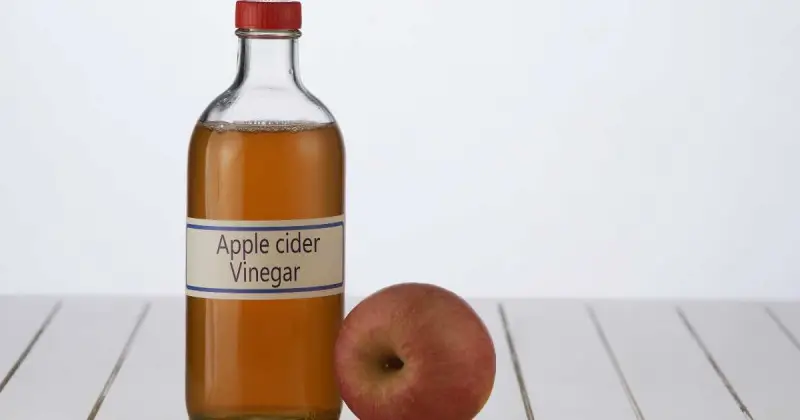
Tips For Long-Term Fruit Fly Management
Focus on eliminating fruit flies’ breeding grounds to effectively manage fruit flies over the long term and prevent infestations. Dispose of ripe fruits promptly, clean up spills, and maintain clean plant pots.
Use traps baited with apple cider vinegar or fruit juice a few drops of dish soap to catch adult fruit flies and gradually reduce their numbers. Regularly inspect and clean drains, garbage disposal units, and recycling bins to avoid infestations.
Install fine mesh screens on windows and doors to prevent fruit flies from entering your living space and infesting indoor plants. By following these practices consistently, you can establish a long-term strategy for fruit fly management and maintain a pest-free environment for your plants. 5
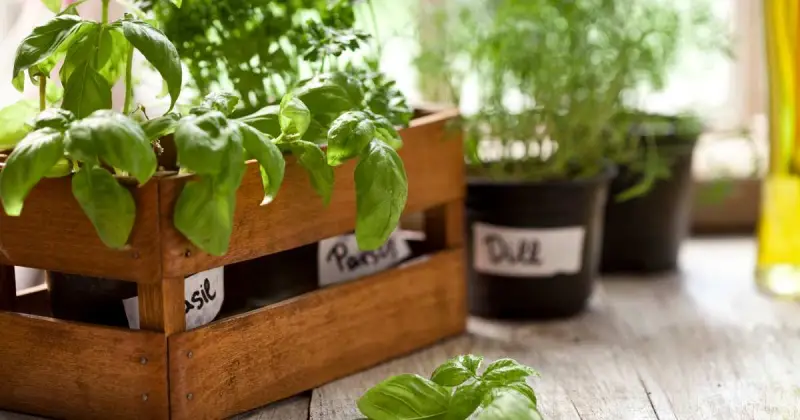
Conclusion
Consistency is critical when dealing with fruit flies. Eliminating them completely may take some time, but with these natural methods, their numbers should decrease over time.
With dedication and attention to detail, you’ll create a fruit fly-free environment for your plants. Keep up the excellent work, and witness your plants flourishing in a pest-free space!
How have you eliminated fruit flies from your plants? Perhaps you’ve used a method we’ve discussed in this article or something else entirely. We’d love to hear your process, so take a moment and comment below!
SOURCES
- Wikipedia – Drosophila Melanogaster
- National Library Of Medicine, National Center For Biotechnology Information – Effective Trapping Of Fruit Flies With Cultures Of Metabolically Modified Acetic Acid Bacteria
- Northwest Center For Alternatives To Pesticides – Tips To Prevent & Trap Fruit Flies
- Commonwealth Of Massachusetts, Department Of Environmental Protection – How To Control Fruit Flies & Fungus Gnats
- University of Maryland – Fruit Flies

